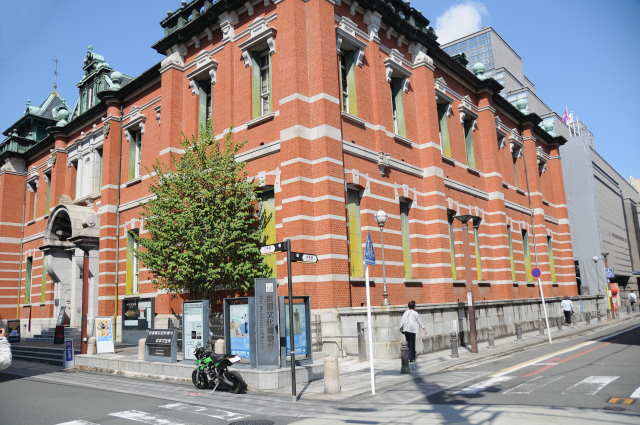When thinking of Japan’s most modern cities, Kyoto is probably not on anyone’s list. And it’s true, once you leave the futuristic station building (the second largest in Japan, btw.) and lose sight of the candle-shaped Kyoto Tower, the city’s narrow streets lined with wooden houses and dotted with Jisho shrines give off a lovable, but somewhat old-fashioned vibe.
Things were very different 120 years ago, though. After the Meiji Restoration, when the Emperor and his new government took residence in Tokyo, Kyoto’s citizens made a concerted effort to keep the city from sliding into obscurity. Japan’s first railroad connected the old and new capital, the Lake Biwa Canal furnished electricity for the brand-new city tram, and a number of Western-style buildings gave Kyoto a distinctly modern look.
To this day, many of these buildings survive in Kyoto’s inner city, especially along Sanjo dori between Teramachi and Karasuma. Take a closer look at the former main street of Kyoto the next time when you’re out shopping and discover these beautiful, not-so-hidden gems.

Let’s take a walk on Sanjo dori westwards from Teramachi. Already at the next corner, you’ll find the 1928 building, so named after its year of construction. Then, it was home to the Kyoto branch of Osaka Mainichi Newspaper, and some traces can still be found in the basement. There are lovely ArtDeco elements throughout the building, especially in the stairwells. Today it houses the GEAR theater and gallery spaces, as well as a restaurant/bar in the basement.

Walk further to the lovely Old Yabetoku Clock Shop with its three arches. This two-story house made with red bricks was built in 1890 for a dealer in watches and precious metals. Sadly, the clocks are gone in favor of clothing, but the building is an important cultural property of Japan.

Directly at the opposite corner lies the SACRA Building, formerly the Kyoto branch of the Fudo Chokin Bank. Built in 1916, it still has the heavy wooden doors and staircase it was originally fitted with. Thanks to the many shops inside, a close-up look is possible.
Two large red brick buildings stand on the second to last block before Karasuma, and they look so similar they could be twins.

The first is the Annex of the Museum of Kyoto, built in 1903 as the Kyoto branch of the Bank of Japan. The inside has been lovingly restored to its former glory: A huge single room with high ceiling and the old wood trimmings of the bank still exudes riches. It was turned into a museum in 1967, and the former vault in what is now the museum’s inner courtyard secures a branch of Maeda Coffee.

Finally, there is the Nakagyo-ku Post Office, another red brick building, built in 1902. This is the only building mentioned here that is still used for its original purpose. It narrowly escaped demolition in the 1970s, thanks to the engagement of the locals.
Many more of these modern buildings from the turn of the century survive in Kyoto, like the Kyocera Museum and other buildings in Okazaki, Kyoto National Museum and Kyoto City Hall, the Restaurant Yaomasa at Shijo Bridge, the old Fucho Prefectural Government building, the old campus of Doshisha University just north of the Gosho… It’s really worth taking the time and looking around a little to find these delightful little gems.
